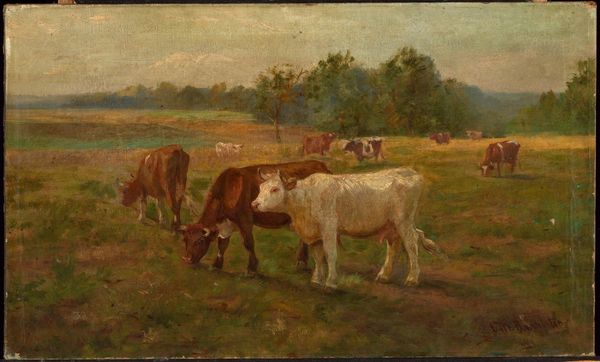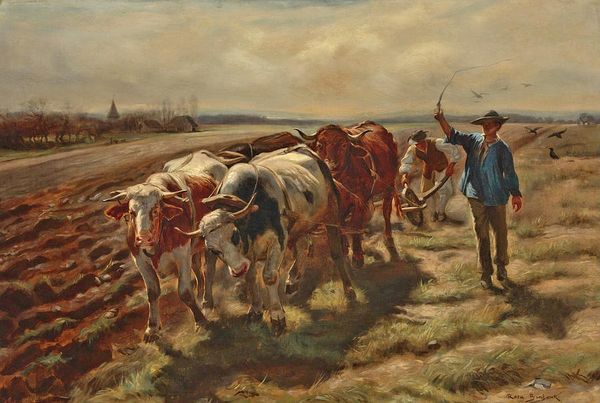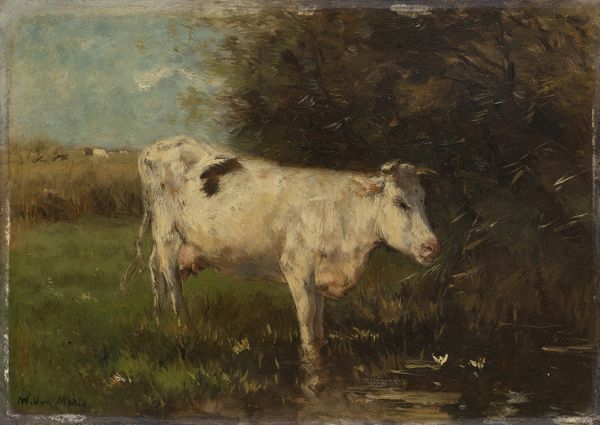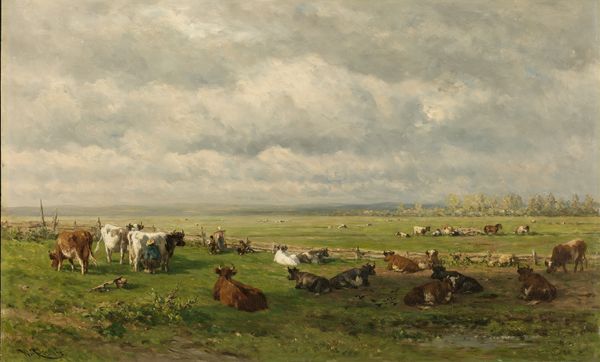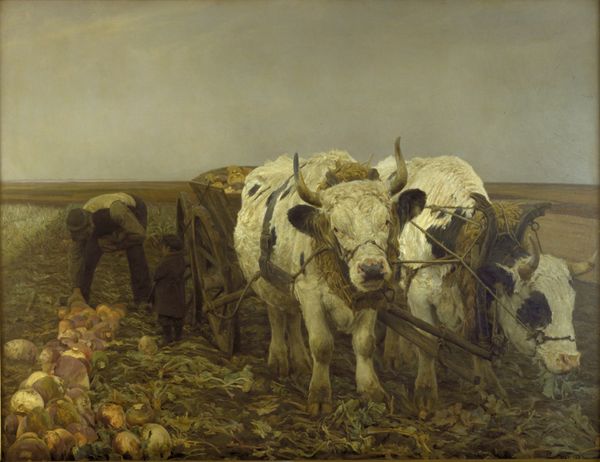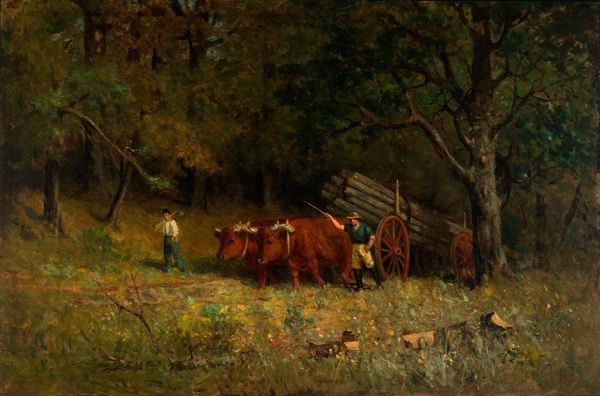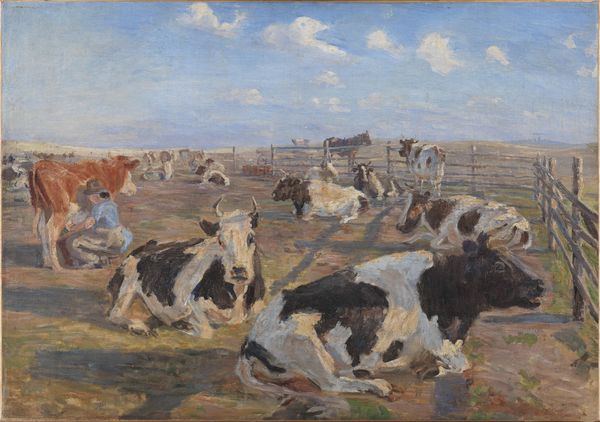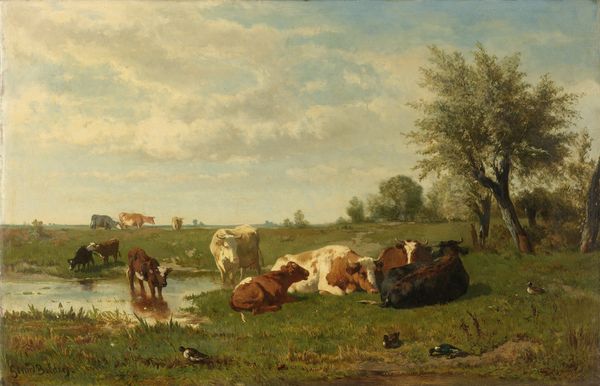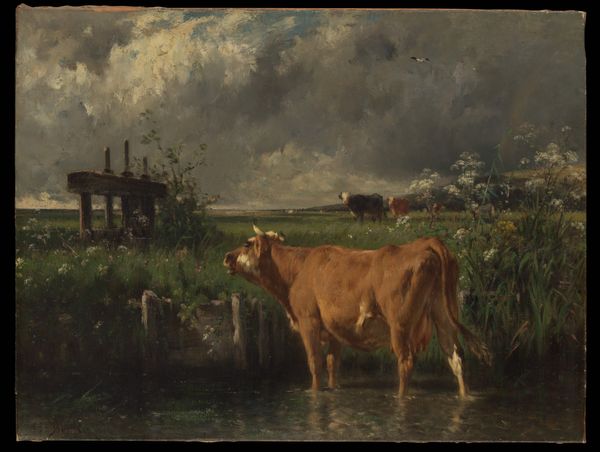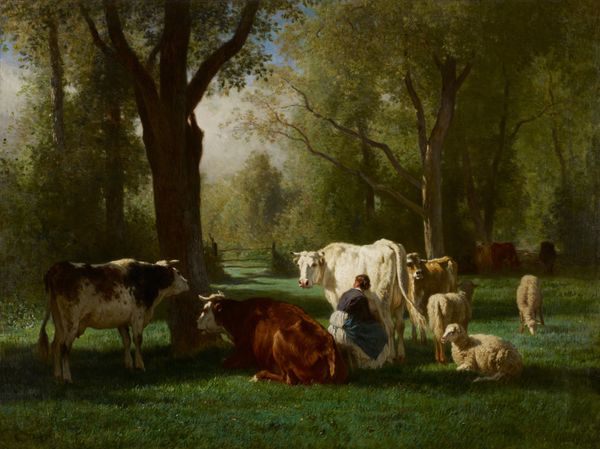
painting, oil-paint
#
gouache
#
painting
#
oil-paint
#
landscape
#
figuration
#
oil painting
#
genre-painting
#
naturalism
#
realism
Dimensions: 205.5 cm (height) x 315.5 cm (width) (Netto)
Curator: Let’s turn our attention to Otto Bache’s "Driving Cows out of the Cowhouse," painted in 1885. The oil painting is held here at the SMK, Statens Museum for Kunst. Editor: It has a quiet, almost dreamlike quality. The scene is dominated by the cows and a soft, diffused light. The palette seems limited to earthy tones, creating a sense of rural simplicity. Curator: Absolutely. This naturalistic rendering resonates with the era's shift towards representing everyday life. Bache’s piece invites dialogue on agrarian realities and social conditions, reflecting on Denmark's shifting agricultural landscape at the time. There’s this quiet acknowledgement of the labour involved, a theme we see amplified by class-conscious artists such as Courbet and Millet, even in a seemingly simple countryside scene like this one. Editor: Look at the symbol of the cows: a source of life, nourishment, and labor, deeply connected with traditional rural livelihoods. You can almost smell the earth and feel the dampness in the air. This wasn't painted as an allegory of the glory of the land but is the actual, routine labour itself that constitutes a core image of the rural identity in the nordic countries. Curator: It raises questions about representation of labor, visibility, and gender roles inherent in rural communities. Note how the artist highlights the interaction between people, animals, and their shared environments and struggles, hinting at both social hierarchies and interdependence. It isn't only the visual fact but also our understanding of its place in the societal tapestry. Editor: Indeed, the limited colour palette and realism emphasize the everyday life of these figures. There is a persistent symbolic connection: the muted tonality represents the subdued, even mundane rhythms of a life lived so intimately alongside nature, making visible its significance in their material lives. Curator: Viewing the piece now can remind us to critically engage with our modern dependency on such images—not as idyllic scenes, but as complex portrayals of rural realities, labour rights, and social politics deeply embedded within agrarian settings. Editor: Looking at the painting, I can not but appreciate how a single visual image—especially when infused with cultural symbolism—transcends time and cultural boundaries. It captures the emotional residue of how we all engage with the material basis of human existence.
Comments
No comments
Be the first to comment and join the conversation on the ultimate creative platform.

